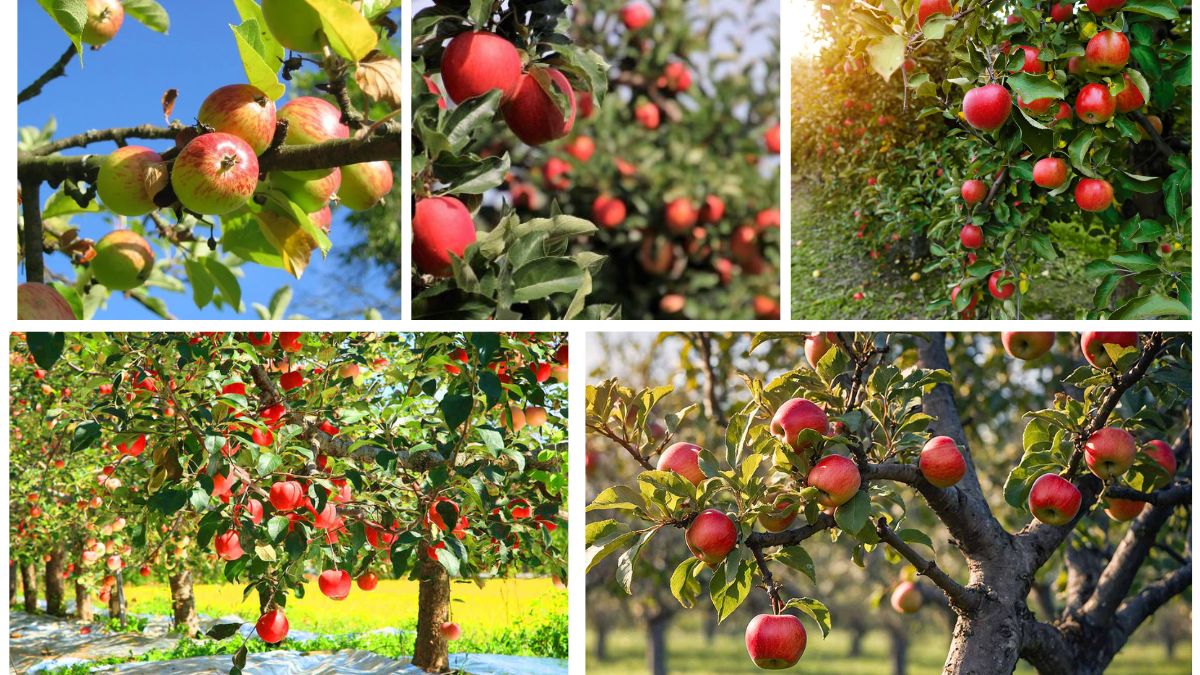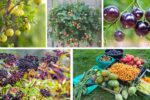Apple trees are among the most rewarding fruit trees you can grow at home. With their fragrant blossoms in spring, lush green foliage in summer, and crisp, sweet fruits in autumn, apple trees offer beauty, shade, and nourishment. Whether you dream of having a small backyard tree for seasonal fruit or starting your own mini orchard, planting apple trees is a fulfilling project. However, to grow healthy, fruit-bearing apple trees, you need to know the right steps and care techniques.
In this guide, we’ll walk through everything you need to know about planting apple trees—from choosing the right variety to preparing the soil, planting, and ensuring long-term growth.
1. Choosing the Right Apple Tree Variety

The first step in planting apple trees is selecting the right variety for your climate and taste preferences. Apple trees come in hundreds of varieties, each suited to specific conditions.
Factors to Consider:
- Climate Suitability: Some apple trees thrive in cold regions, while others prefer mild winters. For example, ‘Honeycrisp’ does well in colder areas, while ‘Gala’ and ‘Fuji’ are better for warmer regions.
- Pollination Needs: Many apple trees are not self-pollinating, meaning you’ll need at least two different varieties nearby for successful fruit production. Self-pollinating varieties, like ‘Golden Delicious,’ can fruit on their own but yield more with cross-pollination.
- Fruit Type: Consider whether you want apples for fresh eating, baking, cider-making, or storage. Varieties differ in sweetness, tartness, and texture.
Pro Tip:
If you have limited space, opt for dwarf or semi-dwarf apple trees. These produce fruit earlier and are easier to maintain compared to full-sized trees.
2. Preparing the Perfect Planting Site
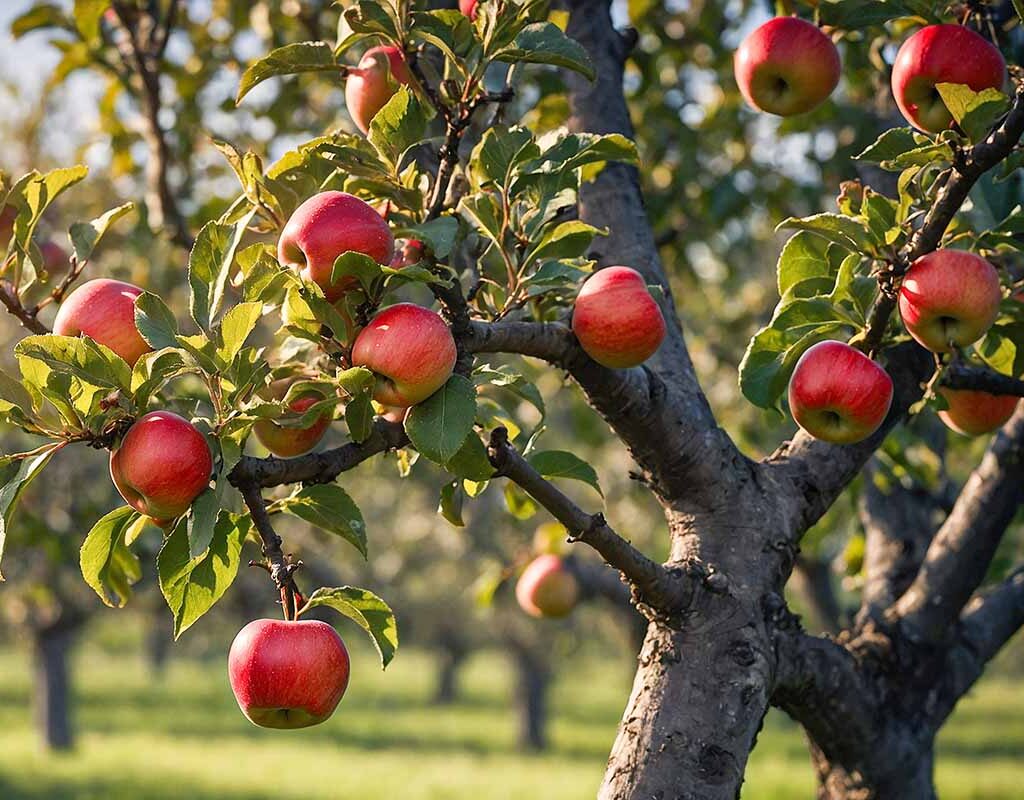
Apple trees need the right environment to flourish. Choosing a good planting site ensures healthy roots, better yields, and fewer pest issues.
Key Requirements:
- Sunlight: Apple trees need at least 6–8 hours of direct sunlight daily. A sunny location ensures strong growth and abundant fruiting.
- Soil: They prefer well-drained loamy soil with a pH between 6.0 and 7.0. Avoid heavy clay or soggy soil, as apple roots are prone to rot.
- Air Circulation: Plant in an open spot where air can circulate freely to reduce the risk of fungal diseases.
- Spacing: Standard apple trees need 15–18 feet between them, while dwarf varieties require about 8–10 feet.
Preparing the Soil:
Before planting, loosen the soil and enrich it with compost or organic matter. This helps retain moisture while ensuring good drainage. If your soil is acidic, add lime to balance the pH; if it’s alkaline, consider adding sulfur.
3. How to Plant Apple Trees Step by Step
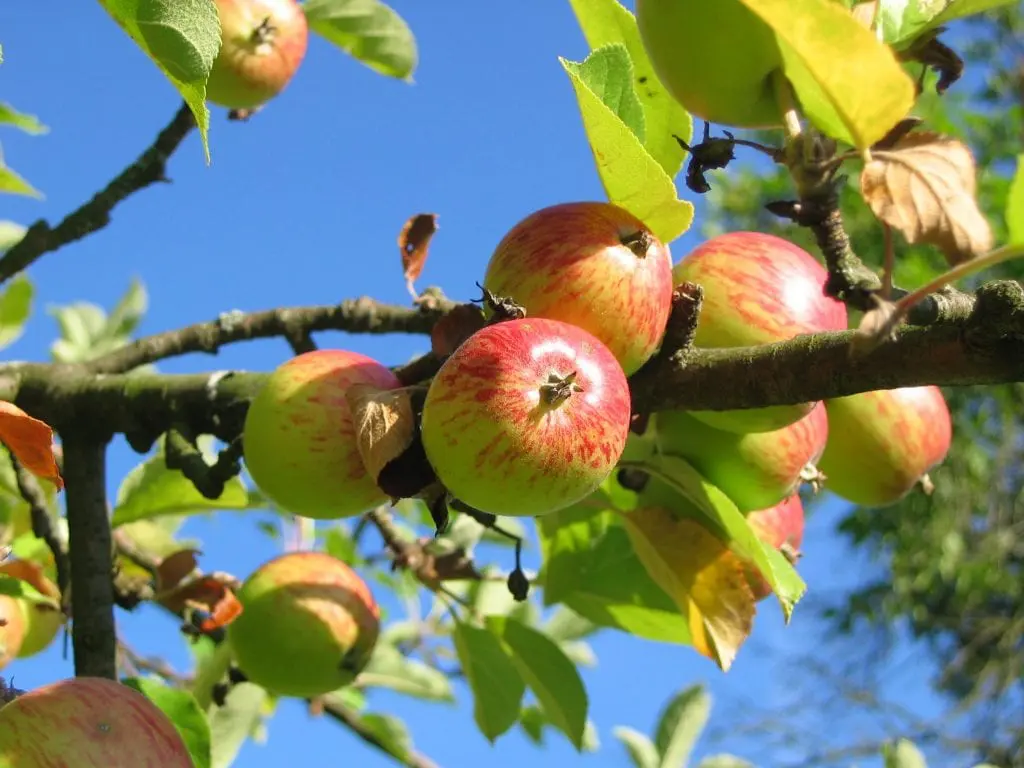
Planting apple trees correctly is crucial to their survival and productivity. Follow these steps for a healthy start:
Step 1: Digging the Hole
- Dig a hole twice as wide as the root ball and deep enough to accommodate the roots without bending them.
- Loosen the soil at the bottom to encourage deep root growth.
Step 2: Preparing the Tree
- If planting a bare-root apple tree, soak the roots in water for a few hours before planting.
- For potted apple trees, gently loosen the roots to prevent them from circling inside the container.
Step 3: Planting the Tree
- Place the tree in the hole with the graft union (the swollen area where the tree was grafted) about 2–3 inches above the soil level.
- Spread the roots evenly and backfill the hole with the excavated soil.
- Gently firm the soil around the tree to eliminate air pockets.
Step 4: Watering and Mulching
- Water thoroughly after planting to help the soil settle.
- Add a 2–3 inch layer of organic mulch around the base, leaving a gap near the trunk to prevent rot.
Step 5: Supporting the Tree
- Young apple trees may need staking for the first year or two to protect them from strong winds. Use soft ties to avoid damaging the bark.
4. Caring for Your Apple Trees After Planting
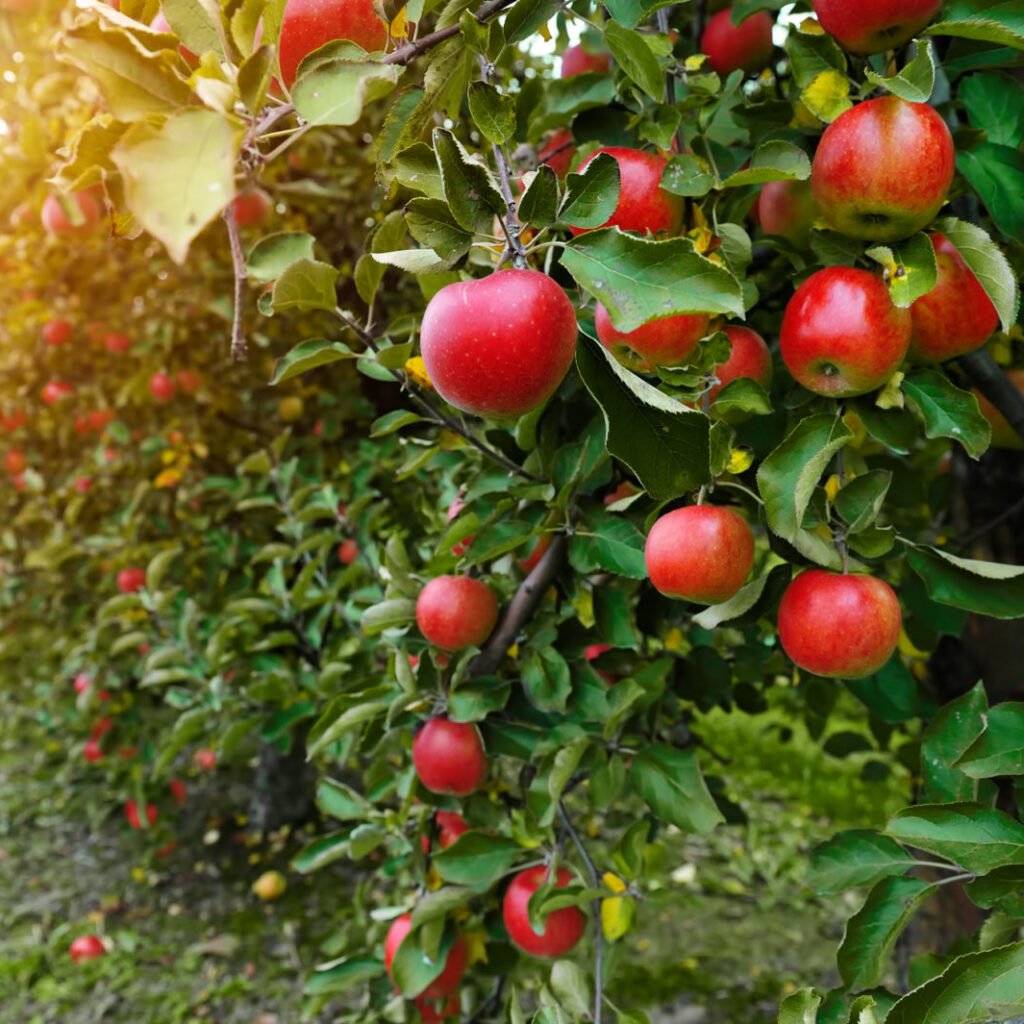
Planting is just the beginning—apple trees need ongoing care to grow strong and bear fruit.
Watering
- Keep the soil consistently moist but not waterlogged.
- Water deeply once a week during dry spells, especially in the first year.
Fertilizing
- In the spring, apply a balanced slow-release fertilizer high in nitrogen to promote growth.
- Avoid over-fertilizing, as this can lead to excessive leafy growth at the expense of fruit.
Pruning
Pruning is essential for shaping your apple tree and encouraging fruit production.
- In the first year, focus on establishing a strong central leader (main trunk).
- Each winter, remove dead, diseased, or crossing branches.
- Thin out crowded areas to improve sunlight penetration and air circulation.
Pest and Disease Control
Apple trees are susceptible to pests like aphids, codling moths, and diseases such as apple scab and powdery mildew.
- Use organic pest control methods such as neem oil or insecticidal soap.
- Encourage beneficial insects like ladybugs to control pests naturally.
- Keep the ground clear of fallen leaves and fruits to reduce disease risk.
5. When to Expect Apples and Harvesting Tips
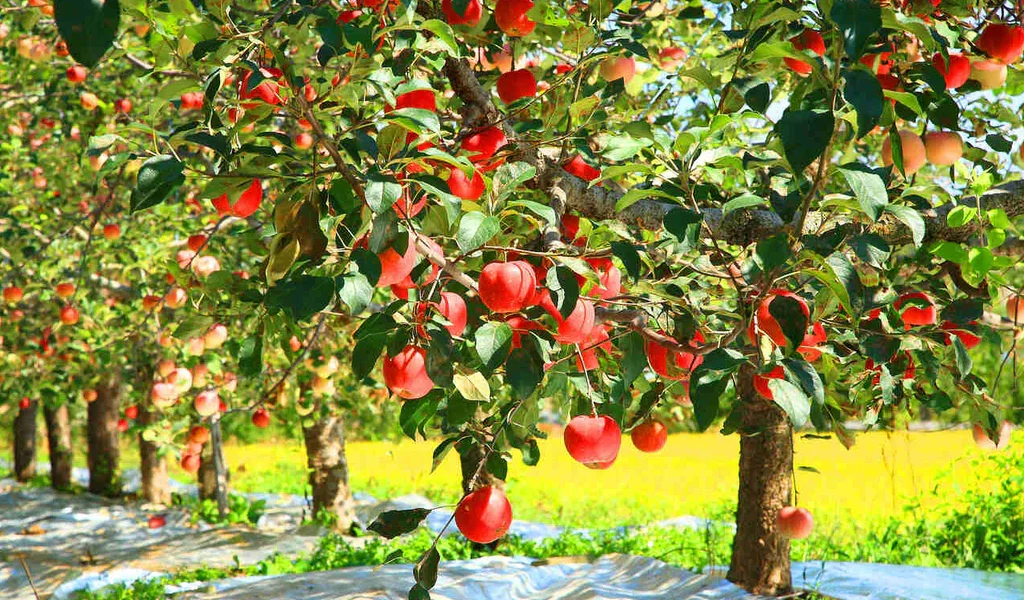
Patience is key with apple trees. Depending on the variety and rootstock:
- Dwarf trees can produce fruit within 2–3 years.
- Standard trees may take 4–6 years.
Signs Apples Are Ready to Harvest:
- The skin color has deepened to the expected shade.
- Apples detach easily from the branch when twisted.
- Seeds inside are dark brown rather than white.
Harvesting Tips:
- Pick apples gently to avoid bruising.
- Store them in a cool, dry place. Some varieties, like ‘Granny Smith,’ can be stored for months, while others are best enjoyed fresh.
6. Benefits of Growing Your Own Apple Trees
Planting apple trees is more than just a gardening hobby—it’s a rewarding lifestyle choice.
- Fresh, Organic Fruit: Enjoy pesticide-free apples straight from your garden.
- Cost Savings: Over time, growing apples at home is cheaper than buying store-bought fruit.
- Environmental Impact: Apple trees provide oxygen, support pollinators, and reduce your carbon footprint.
- Beauty and Shade: They enhance your garden’s aesthetics while offering natural shade.
- Family Bonding: Caring for apple trees can become a cherished activity for the entire family.
7. Common Mistakes to Avoid
Even beginner gardeners can succeed with apple trees if they avoid these pitfalls:
- Planting in poor-draining soil → leads to root rot.
- Burying the graft union → weakens the tree and reduces productivity.
- Neglecting pollination needs → results in fewer or no apples.
- Overwatering → suffocates the roots.
- Skipping pruning → creates dense canopies that attract pests.
Conclusion
Starting your orchard dream begins with just one apple tree. With the right variety, proper planting techniques, and consistent care, you can enjoy fresh, homegrown apples for years to come. Whether you’re aiming for a single tree in your backyard or envisioning rows of apple trees in a full orchard, the journey is deeply rewarding.
By planting an apple tree today, you’re not just growing fruit—you’re cultivating a legacy of beauty, nourishment, and joy.
